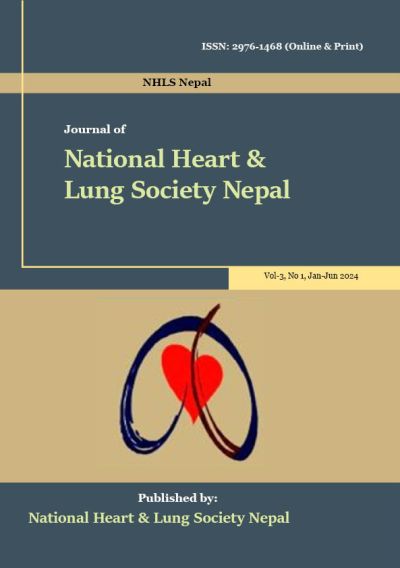Prevalence of Alcohol Consumption and its Impact on Morbidity Among Patients Admitted to the Department of Medicine
DOI:
https://doi.org/10.3126/jnhls.v3i1.66390Keywords:
alcohol consumption, prevalence, impact on morbidityAbstract
Background: Alcohol consumption is a prevalent societal issue with significant implications for public health. This study aims to investigate the prevalence of alcohol consumption and its impact on morbidity and outcomes among patients admitted to medicine department.
Methods: A prospective observational study was conducted using a proforma containing demographic and clinical data. Data of four hundred subjects admitted to Bharatpur Hospital in the department of medicine over the year 2023 were randomly collected. Data on alcohol consumption, demographic characteristics, medical history, and morbidity outcomes were collected and analyzed using descriptive statistics and chi-square tests.
Results: Among the study subjects (n=400), 22% reported alcohol consumption. The prevalence of alcohol consumption varied across demographic groups, with higher rates (30.9% and 33.1%) observed among males and middle age groups (36 - 55 years) respectively. Patients with a history of alcohol consumption had a significantly higher incidence of morbidity outcomes, including longer hospital stays (8.2 vs 5.1 days, p <0.0001)), increased need for intensive care or referrals (10.71% vs 5.2%, p <0.05), and higher mortality rates (8.03% vs 3.1%, p <0.05) compared to non-drinkers.
Conclusion: This study highlights the relatively high prevalence of alcohol consumption among patients admitted to medical wards and its association with adverse morbidity outcomes. These findings underscore the importance of targeted interventions and comprehensive healthcare strategies aimed at addressing alcohol-related morbidity in hospitalized patients.




